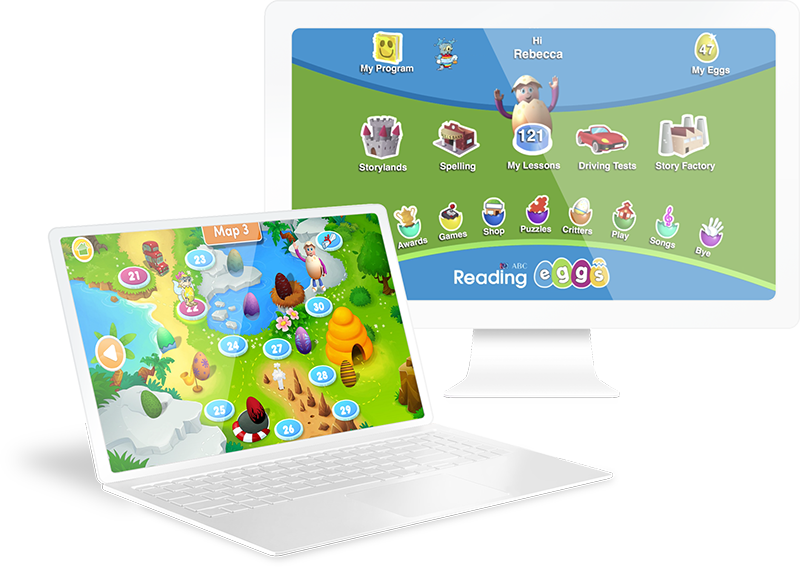
When you watch your kids struggling to spell, your first instinct is to help.
But it’s never that simple.
As you try to guide them through sounds, letters and rules, you start to think:
How do children actually learn to spell?
Spelling skills are normally achieved through a mix of memory and subconscious learning.
For example, you’ve probably been exposed to ‘-tion’ enough times to know it’s pronounced ‘shun’.
Which leads to our next problem.
How can you teach your kids to spell if you don’t know why we spell the way we do?
While spelling is a deep, rich and complex subject, here are a few of the basics you should know to help your kids with spelling:
1. Focus on sounds
All words are made up of sounds called phonemes. They are either consonants or vowels.
For example, ‘cat’ comprises three individual phonemes: /c/ /a/ /t/.
These phonemes then translate to individual letters.
By encouraging your kids to identify sounds first, they’ll be able to identify their letters more easily.
However, many words in English are spelled differently from how they sound.
That’s OK – let your kids spell words the way they sound (phonetically) at first.
For example, ‘house’ might be spelled as ‘hows’.
Make sure you praise them for the parts they spelled correctly. Then, review the word and correct the spelling.
You can do this by comparing it to more familiar words. With ‘house’, this might be comparing it to ‘our’ or ‘mouse’.
Being aware of these sounds (called phonemic awareness) also leads to improved reading, so you’ll be building both skills at once!
Award-winning reading program Reading Eggs is packed with 120 phonics lessons focusing on the five key areas: phonemic awareness and phonics, sight words, vocabulary, fluency and comprehension.

Each lesson in Reading Eggs builds on the previous one to build essential skills needed to become a fluent reader
2. Encourage self-questioning and reflection
Kids can use words they do know how to spell to remember spellings that are unfamiliar. Encourage them to ask themselves the following questions when trying to spell a challenging word.
Does this word sound like another one I have heard before?
Are there syllables or parts of this word that I have heard in other words?
They can then use this knowledge to liken groups of words to another via analogy. For example, the spelling of ‘sit’ can be recalled for ‘pit’, ‘fit’ and so on.
3. Try ‘chunking’
Words can be split into different chunks. These chunks might have words or sounds your children are familiar with already. For example, an approach to the word ‘hospital’ might look like this:
- Break into chunks: /ho/ /spit/ /al/.
- Find a chunk that corresponds with a known word: /ho/ spit /al.
- Use other known words to determine what’s missing: /ho/ = ‘hot’ minus the /t/, /al/ = ‘ball’ minus the /b/.
- Write the chunks together: hospital.
- Review and make the correction: hospital.
4. Play memory games
Memory games are called ‘mnemonics’. They might be phrases, visuals or rhymes that help your kids to remember words.
Here are some classic examples:
- The hospital’s full — it doesn’t have room for an extra ‘l’.
- Argue lost an ‘e’ in an argument.
- I would like a piece of
- Rhythm: rhythm helps your two hips m
- Innocent: in no century is a criminal innocent.
Have some fun and see what your kids come up with. It doesn’t have to be word-based, and it doesn’t have to be clever – long-term memory is the goal.
5. Use word families
Group the words in your kids’ spelling lists by structure – how the word is ‘built’. This makes it much easier for them to pick up patterns of spelling that can be applied to new words. You could group words by the following categories:
- prefixes: common elements attached to the start of a word, e.g. pre-, un-, re-
- suffixes: elements attached to the end of a word, e.g. -ness, -ed, -ish
- roots: core words that can be adapted with suffixes and prefixes, e.g. care: carefully, careless, caring
- graphological patterns, e.g. words that include the common form ‘our’ but sound different (tour, court, sour).
6. Teach kids to self-check and revise their spelling
The best spellers are curious. They find joy in checking and revising.
You can encourage this curiosity by giving your kids access to dictionaries (online or physical). They’ll feel empowered knowing that the spelling of any word they could possibly want to know is readily available.
But the best way to motivate kids to learn spelling is to make it fun!
You could try setting up a spelling bee between your child’s friends or siblings, playing a game of scrabble or hangman, or doing a word jumble where kids create as many words as possible in five minutes from a random letter pile.










